Thoughts on Time and Raphael's Transfiguration
I’ve been thinking about Time a great deal recently. It’s a curious business, isn’t it? Perhaps it’s because I’m at the sort of age where it starts moving ever faster, or perhaps because “on this day” memories filtering through social media and photo albums remind of spring lockdowns and curfews—once so entirely all-encompassing, but now distant and diaphanous—which gave it a newly amorphous, malleable, form.
Time is an aspect of Raphael’s last painting which I find particularly intriguing. It is the vast Transfiguration (410 cm × 279 cm; 160 in × 110 in), I’m not alone in thinking it one of the best paintings in the world, and it is to be found in the Pinacoteca, the picture gallery of the (alarmingly plural) Vatican Museums. The atmospherically lit room which houses it is also home to two other major paintings by Raphael, plus the surviving tapestries he designed for the Sistine Chapel (hence the low lighting).
By rights it should be full of visitors but the Vatican Museums are enormous and despite some thirty thousand visitors a day Room VIII is almost always empty. It also has very comfortable wooden chairs which I never seem to remember to take a photograph of, and which were designed in the thirties but modelled on the “X”-shaped chair of Sixtus IV in this fresco by Melozzo da Forlì).
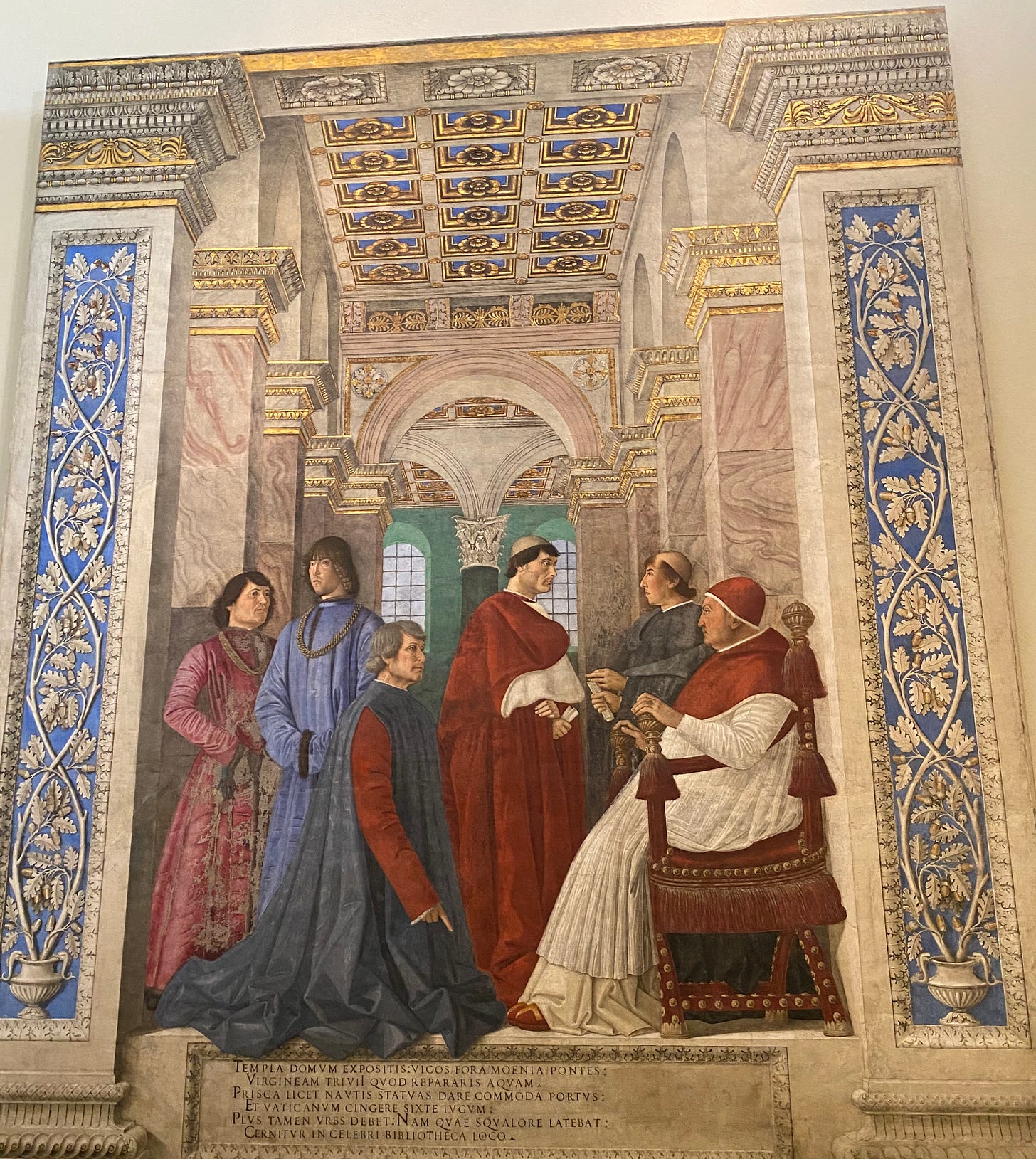
All in all a seat in Room VIII of the Pinacoteca Vaticana is an excellent spot from which to contemplate Time and the Transfiguration.

Cardinal Giulio de’ Medici (who would become Pope Clement VII and deny Henry VIII his divorce) commissioned the painting from Raphael as the altarpiece for the Cathedral of Narbonne, just one of the innumerable and lucrative bishoprics he held at places he had, for the most part, never visited. He was also, somehow wonderfully improbably, Bishop of Worcester: delightful as Worcester Cathedral is, the Medici and the West Midlands are a fairly unlikely pairing. This casual holding of multiple church offices was, of course, exactly the sort of thing that was at this very moment making Martin Luther extremely cross.

In fact the painting never made it to France. In 1520, soon after its completion, Raphael died following eight days of fever. He was thirty-seven years old. Before his funeral the painting was displayed by his coffin at his house in the Borgo. Pope Leo X visited his deathbed, an unprecedented honour and in 1523 Giulio de’ Medici had the painting installed at the high altar of San Pietro in Montorio on the Janiculum Hill. Narbonne was snubbed.
The painting shows two distinct but consecutive events told in the Synoptic Gospels of the New Testament (those of Matthew, Mark and Luke which tell many of the same stories in a similar manner, in contrast to the distinct Gospel of John).
At the top of the painting Christ floats in a haze of light on an unnamed hill usually identified in Catholic tradition with Mount Tabor. He appears between Moses and Elijah, to whom He speaks. Moses represents Law and Elijah the prophets. They both have an eschatological significance: heralds of the end of the world, judgement, and afterlife.
And after six days Jesus taketh Peter, James, and John his brother, and bringeth them up into an high mountain apart,
And, behold, there appeared unto them Moses and Elias talking with him.
Then answered Peter, and said unto Jesus, Lord, it is good for us to be here: if thou wilt, let us make here three tabernacles; one for thee, and one for Moses, and one for Elias.
While he yet spake, behold, a bright cloud overshadowed them: and behold a voice out of the cloud, which said, This is my beloved Son, in whom I am well pleased; hear ye him.
And when the disciples heard it, they fell on their face, and were sore afraid.
And Jesus came and touched them, and said, Arise, and be not afraid.
And when they had lifted up their eyes, they saw no man, save Jesus only.
King James Version. Matthew 17,1-8
Below Christ, on the hill, Peter, James and John recoil in astonishment at this moment of the revelation of His divinity, and God the Father’s assertion of Christ as his son and mouthpiece.
After this vision, the scene in the lower part of the painting takes place. The next verses tell of Christ saving a boy possessed in the presence of apostles.
And when they were come to the multitude, there came to him a certain man, kneeling down to him, and saying,
Lord, have mercy on my son: for he is lunatick, and sore vexed: for ofttimes he falleth into the fire, and oft into the water.
And I brought him to thy disciples, and they could not cure him.
Then Jesus answered and said, O faithless and perverse generation, how long shall I be with you? how long shall I suffer you? bring him hither to me.
And Jesus rebuked the devil; and he departed out of him: and the child was cured from that very hour.
KJV, Matthew 17,14-18
In fact in this lower section depicting the miracle of the child cured—the boy is shown on the right of the painting: arms akimbo, gently glowing—Christ is absent. Instead of His physical presence, the force of his divinity bleeds through the temporal division from the upper part of the painting.
In the bottom left hand corner, in a blue robe, is perhaps St Matthew. He is the author of the gospel which gives the most detailed description of the Transfiguration, perhaps alluded to by the book he holds.
His foot juts out towards us, piercing the fourth wall so to speak. The light of his shoulder leads us up to the figure in red, perhaps Peter’s brother Andrew. Andrew points at the scene above, which has already happened. Our eye is drawn by his gesture up to the transfigured Christ, and then down again by more pointing, this time Thaddeus (in green) indicates the boy. He is being cured now, we are told, because the revelation of Christ’s divinity has already happened. And yet there they are, occupying the same space.
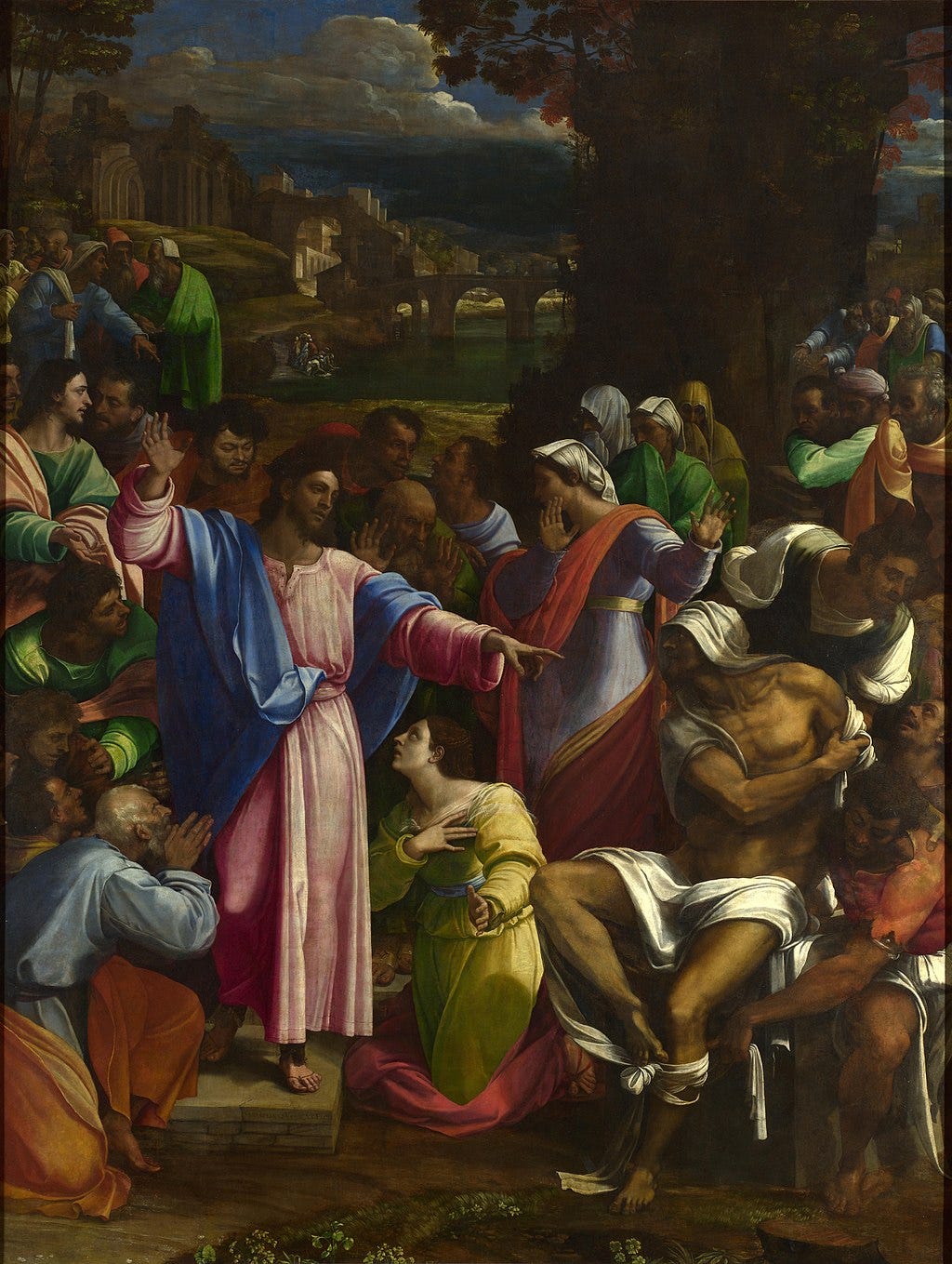
When Giulio de’ Medici commissioned the Transfiguration from Raphael for Narbonne he also commissioned a Raising of Lazarus from Sebastiano del Piombo, a protégé of Michelangelo. The two paintings were seen as a challenge between Raphael and his great rival Michelangelo who was otherwise occupied with architectural and sculptural works for the Medici. However Michelangelo appears to have acted as a mentor to Sebastiano on the Lazarus project and is believed to have provided him with designs (according to Vasari, Sebastiano acted “sotto ordine e disegno in alcune parti” which is fairly vague).
I’ve often looked at this painting and wondered what Raphael would have made of Poincaré and Einstein, of Baudelaire and James Joyce, and indeed of Cubism. His Transfiguration has long seemed to me a wildly sophisticated anticipation of Modernity with its casual elision of time and space. And while thinking of Time (a capital letter is once again required, I think) I then always wonder what on earth Raphael might have produced had his life been as long as that of Michelangelo, his near contemporary, who lived to eighty-eight and was granted half a century longer than il divino Raffaello.



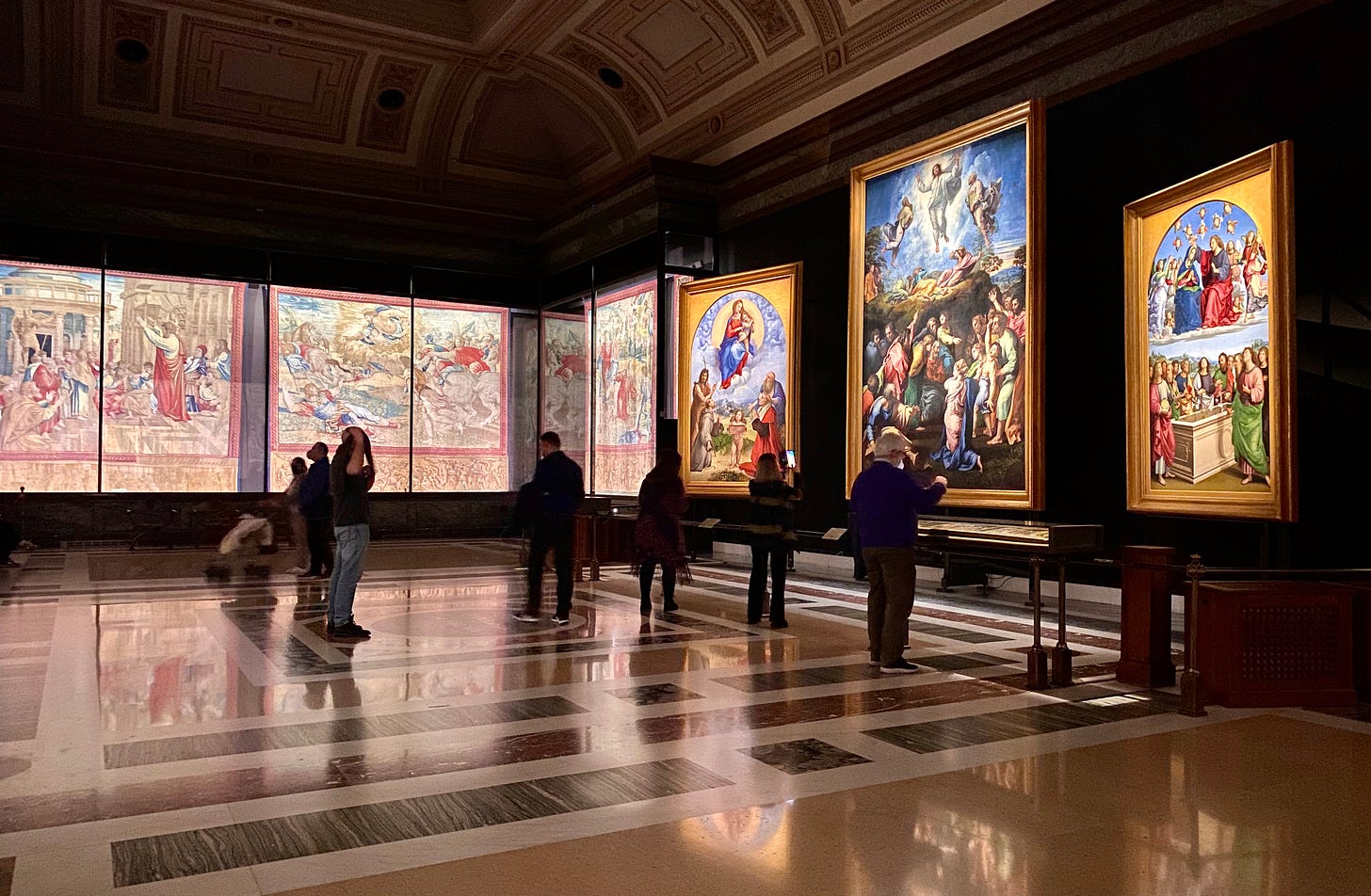
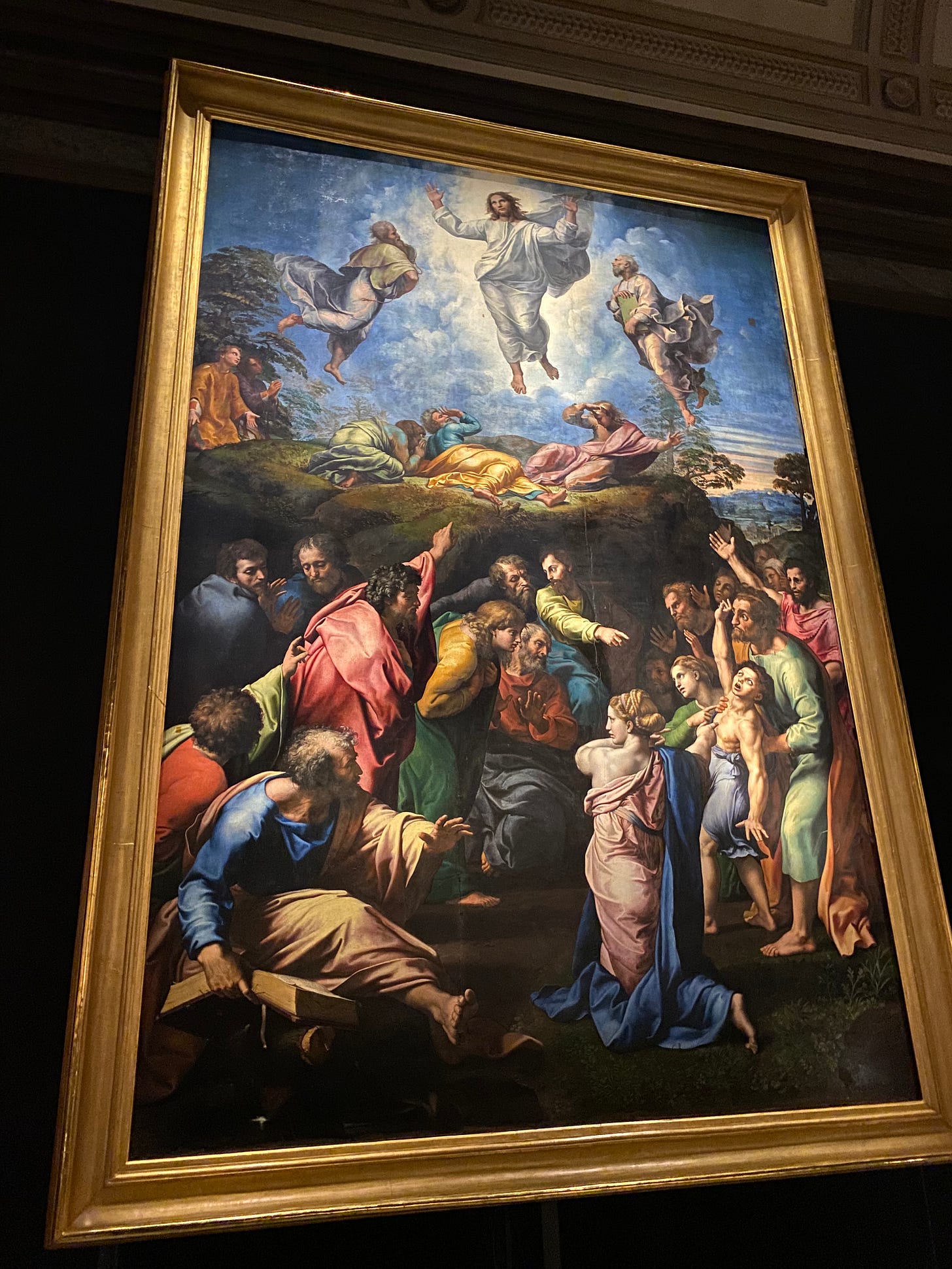

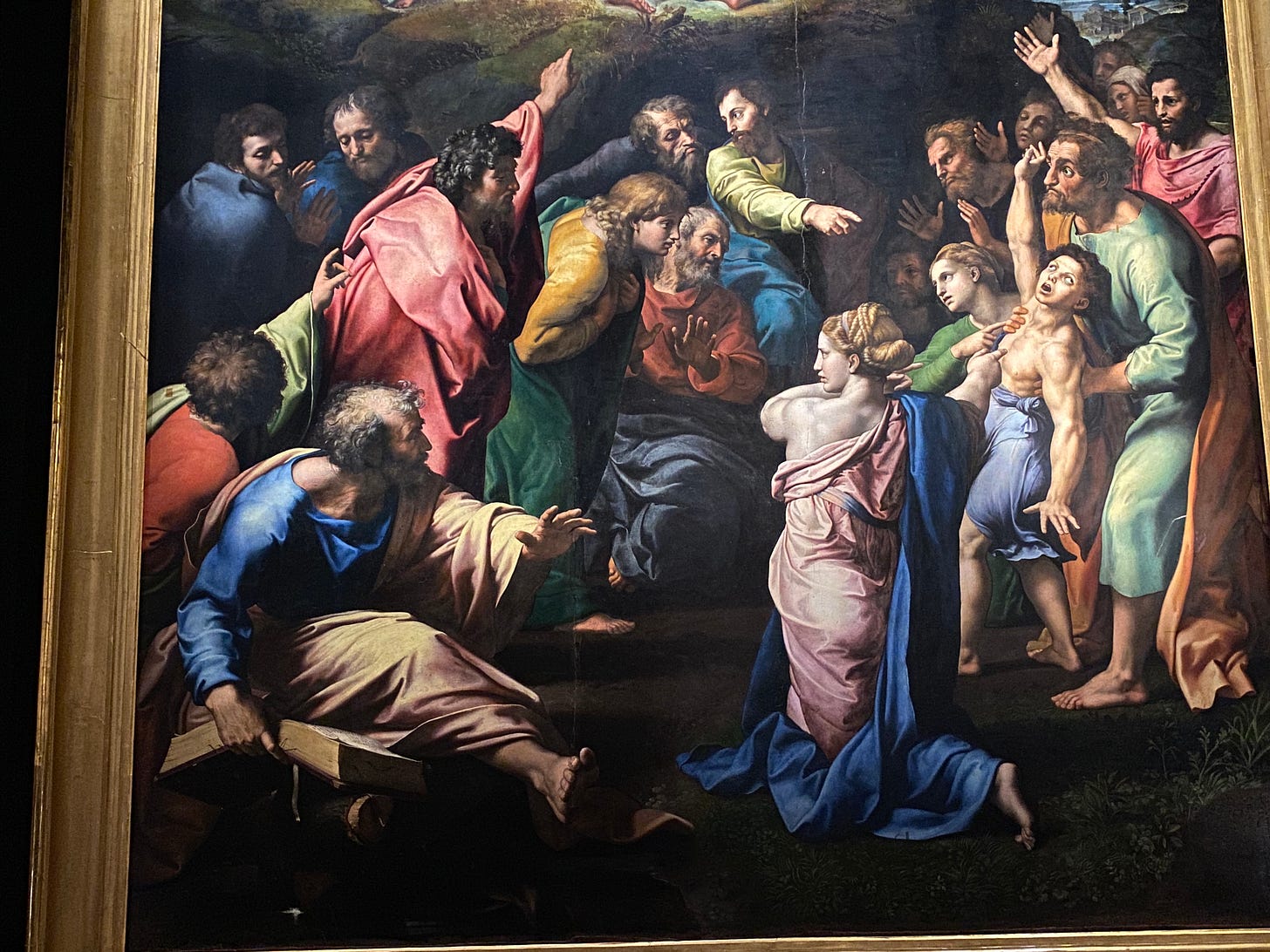
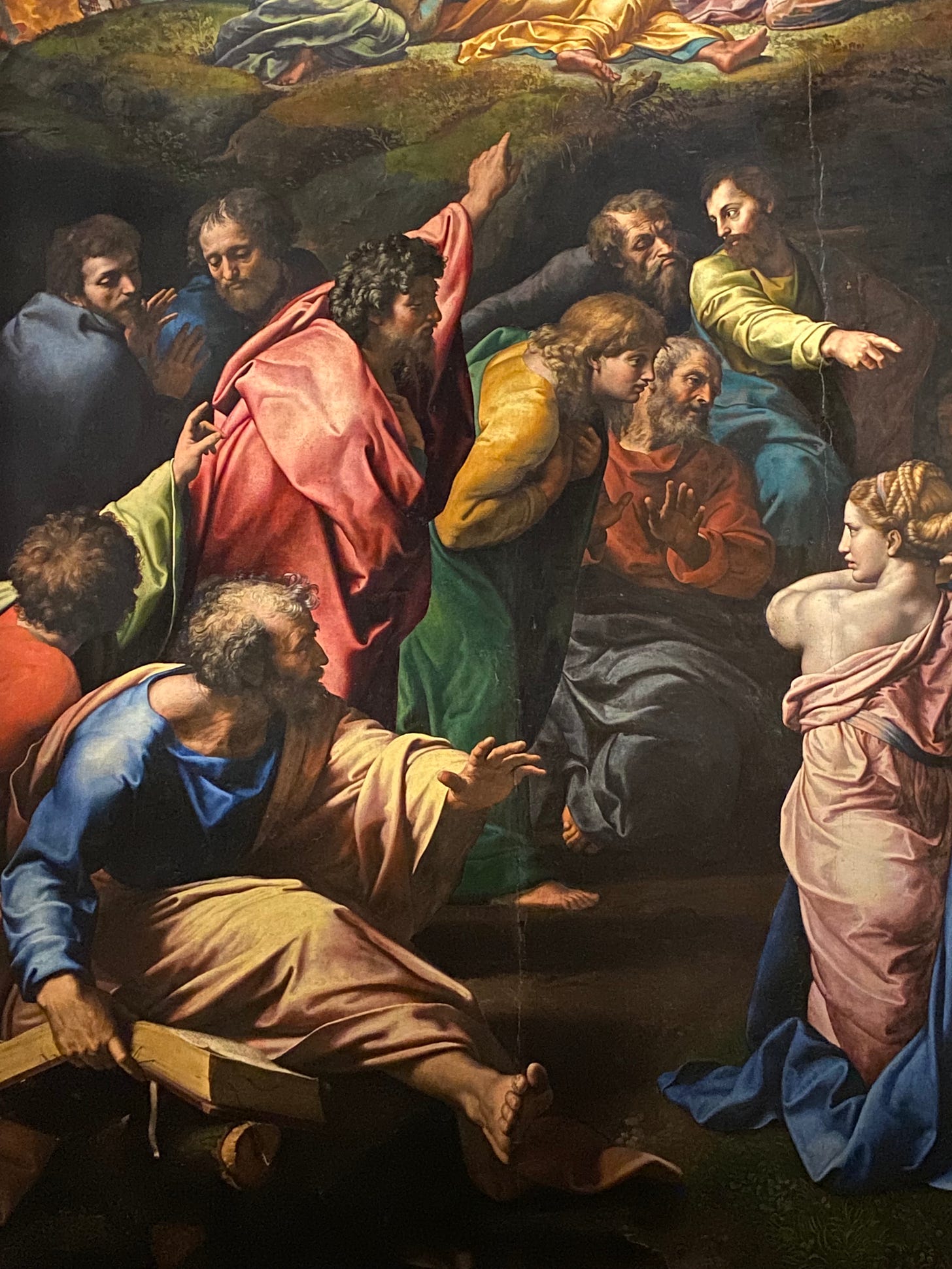
Had he lived longer, his wonderful project with his friend Baldassare Castiglione would have left us a very different Rome.
Thanks so much for this posting Agnes. I've been to the Vatican Museums three times, but have not yet made it to this gallery. Your article encourages me (again) to visit all the galleries in that vast institution in which I've not yet set foot. Clearly another item for the bucket list.